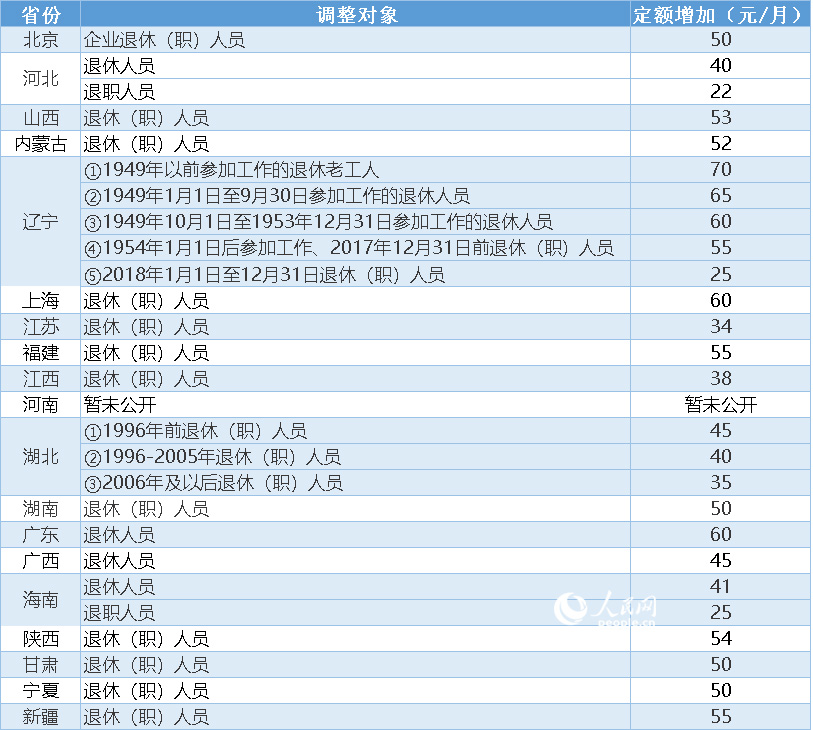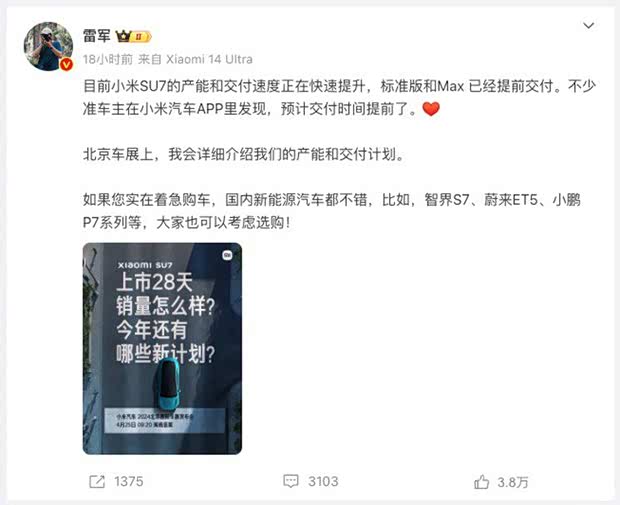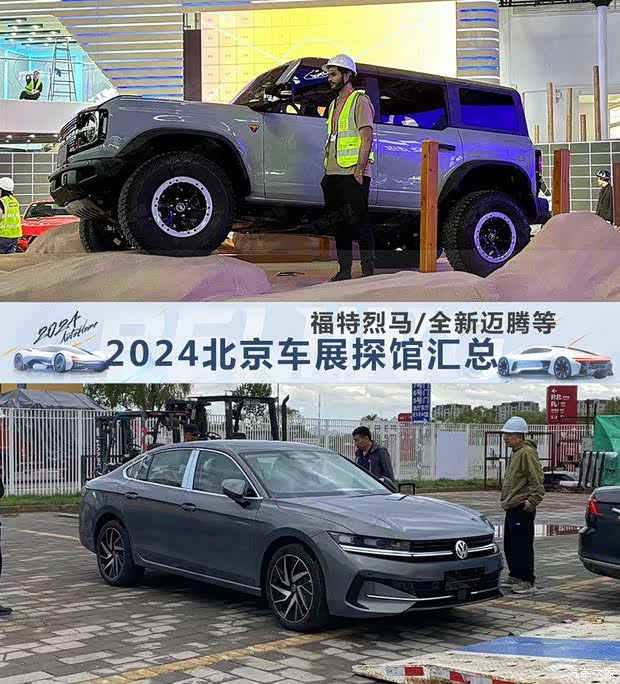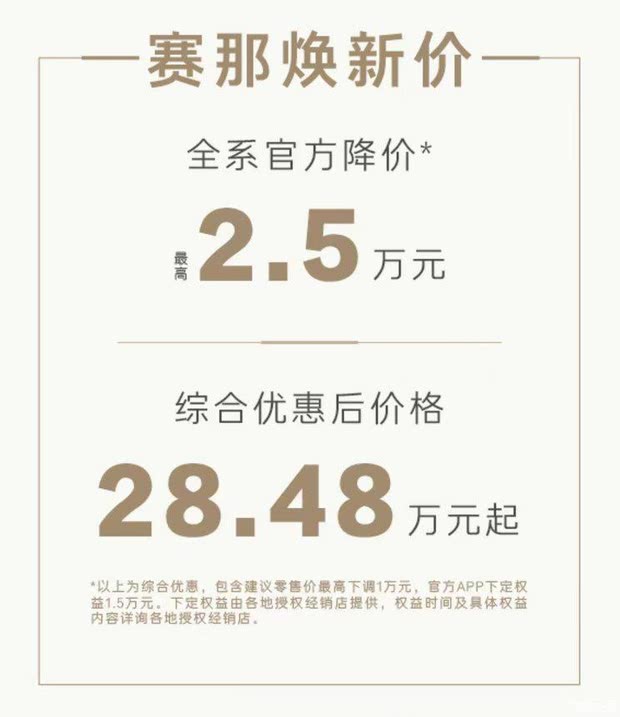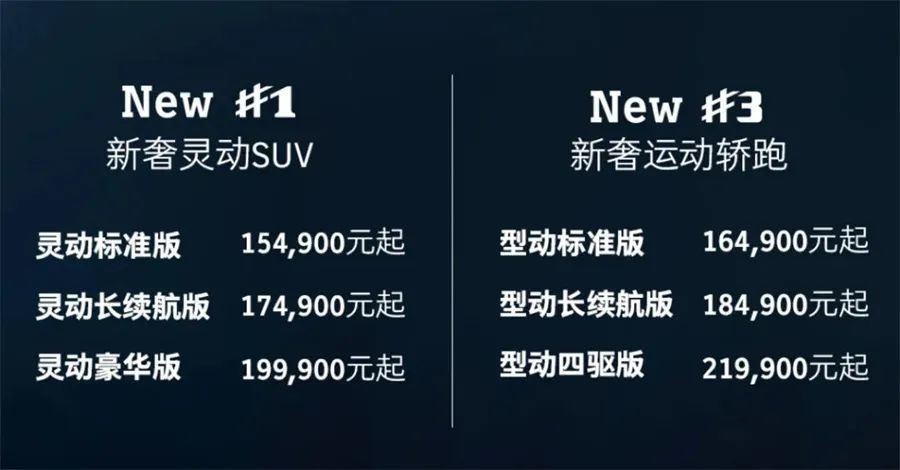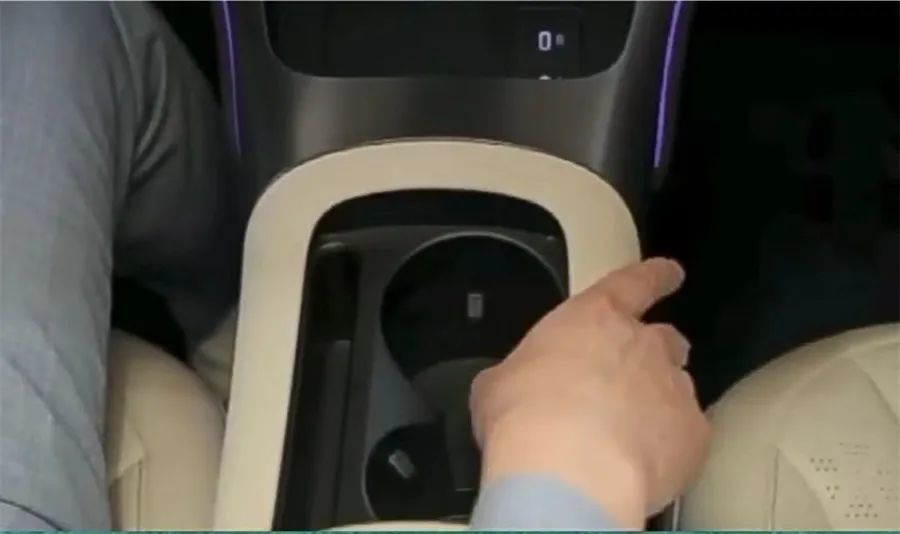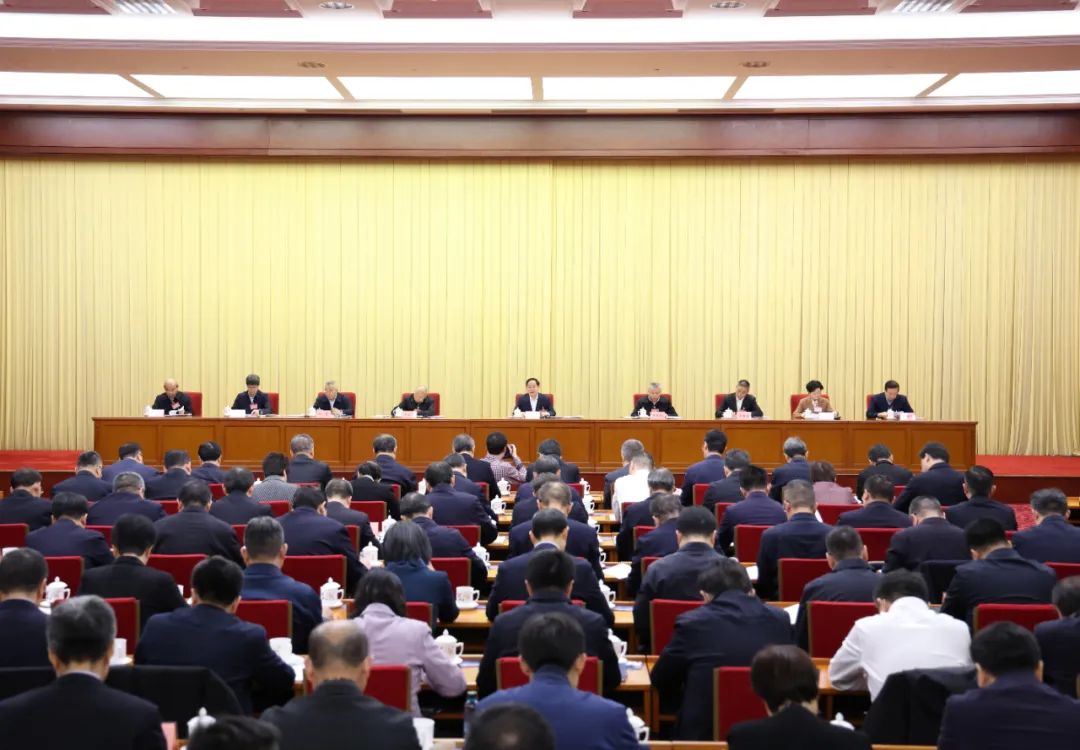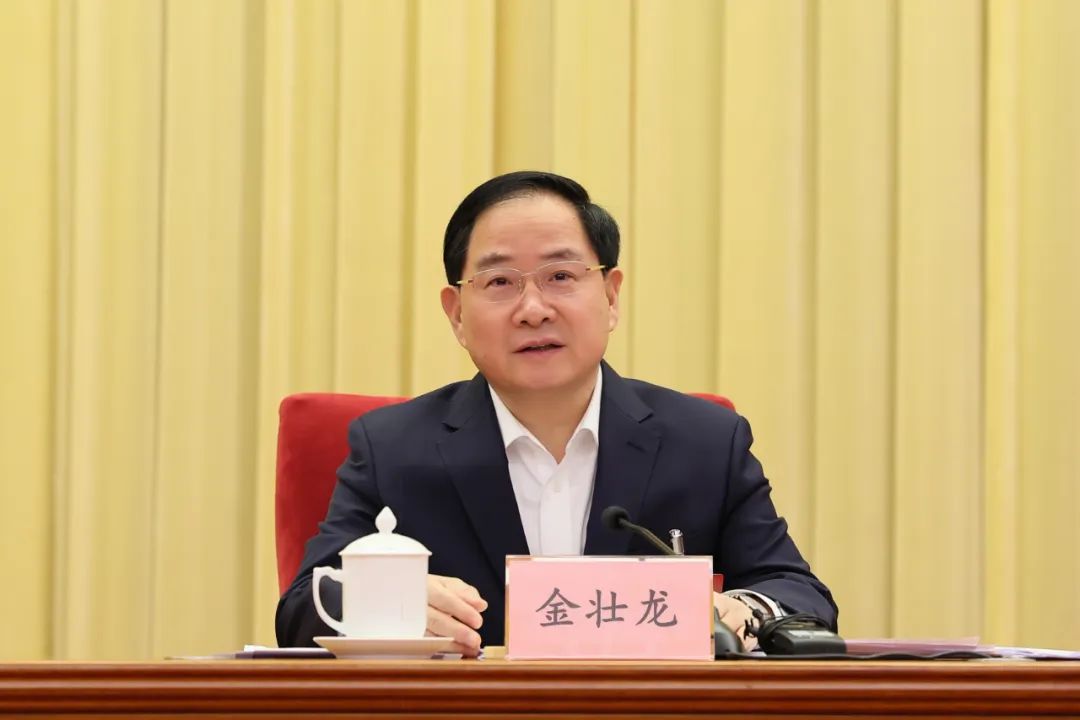The business review of the Board of Directors of Chuangyuan Xinke in 2022 is as follows:
I. Business Summary
(A) business model
Chuangyuan Xinke (Shanghai) Technology Co., Ltd. is a professional instrument company focusing on developing RF communication test instruments and providing overall test solutions. The company focuses on enhancing the potential energy construction of wireless test instruments, mainly developing wireless communication test, vehicle networking test and wireless communication equipment. It has its own brand and a series of core patented technologies of test instruments, integrating R&D, production and sales. It is a high-tech enterprise with completely independent intellectual property rights, and won the special prize of National Science and Technology Progress Award in 2016 and the first prize of Jiangsu Science and Technology Award in 2020. The company has a strong R&D team, the core of which has many years of R&D experience in mobile communication, RF microwave, radio monitoring and navigation testing. The company’s main products include signal analysis and spectrum analysis series, signal simulation and signal generation series, radio monitoring and Beidou navigation test series, vector network analysis series, wireless network test and channel simulation series, and it is a representative enterprise of high-end wireless communication test instrument industry in China.
For many years, the company has undertaken the development tasks of the national "New Generation Broadband Wireless Mobile Communication Network" major science and technology special project, Shanghai high-tech industrialization special project, strategic emerging industry development special project, scientific and technological innovation action and other research tasks, undertaken the continuous construction task of Shanghai wireless communication test instrument engineering technology research center, comprehensively carried out the research on 5G/6G and millimeter-wave communication test technologies, and participated in the formulation of national 5G/6G millimeter-wave test specifications and standards. At present, we are cooperating with Shanghai Institute of Advanced Studies, Chinese Academy of Sciences to undertake the project of "prototype testing and verification of 6G basic chips for new networks", and actively deploy 6G testing, which has enhanced the company’s long-term core competitiveness.
By adopting the mode of "Industry-University-Research" technical cooperation with universities, Dongda-Chuangyuan Electronic Measurement Technology Research Center, which was co-founded with Southeast University, has entered the third phase of cooperation (research and development of microwave, millimeter wave, terahertz and communication measurement technology and instruments), and established an advanced satellite navigation technology collaborative innovation technology center with a famous university in China to ensure the technical reserve and talent echelon construction ability, and ensure the technical innovation and sustainable development ability.
The company is customer-oriented and provides leading test products and overall solutions. According to different product characteristics, the company adopts direct sales, distribution and online sales marketing models respectively.
During the reporting period, the company’s business model did not change much.
From the reporting period to the report disclosure date, the company’s business model has not changed.
Second, the operation review
(1) Business plan
In the first half of 2022, the company optimized the "1+3" development strategy and enriched the company’s business sectors. However, due to the epidemic situation in novel coronavirus, Shanghai, according to the requirements of the Shanghai government’s epidemic prevention and control, from March onwards, employees’ living places were temporarily closed and controlled, and they could not work normally. From April 1st, the company’s headquarters in Shanghai and the living places of all its employees in Shanghai were under temporary closure management, and they were unable to work normally. From June 1st, the company resumed normal production and business activities, which had a certain impact on the company’s operation in the first half of 2022. In the first half of 2022, the company realized an operating income of 136,445,400 yuan, a year-on-year decrease of 27.73%; The net profit attributable to shareholders of listed companies was 11,564,900 yuan, a year-on-year decrease of 55.22%. As of June 30, 2022, the company’s total assets were 1,021,360,100 yuan, a year-on-year increase of 4.84%. The basic earnings per share was 0.08 yuan, a year-on-year decrease of 55.56%.
1. Optimize the company’s "1+3" development strategy and change the company’s full name and securities abbreviation at the same time.
The company held the 15th meeting of the sixth board of directors on April 8th, 2022, and deliberated and passed the Proposal on Optimizing the Company’s "1+3" development strategy. Based on the needs of the company’s positioning and long-term development planning, and in line with the company’s main business development and strategic planning, the company’s long-term development strategy was optimized. The optimized "1+3" strategy "1" refers to the potential energy construction of continuous wireless communication test instrument technology.
(1) Wireless communication test: that is, the wireless communication test instrument business mainly based on 5G/6G communication, Beidou navigation and semiconductor radio frequency;
(2) Vehicle networking test: namely, vehicle networking communication test business mainly based on C-V2X and automotive electronics;
(3) Wireless communication equipment: namely, communication equipment business mainly consisting of wireless detection equipment, millimeter wave module and satellite communication transmission module.
In order to better adapt to and clearly reflect the core technology of the company’s products, future positioning and long-term business development direction, the company’s securities abbreviation and full name were changed, and the company was renamed as "Chuangyuanxinke (Shanghai) Technology Co., Ltd.", and the securities abbreviation was "Chuangyuanxinke", and the securities code remained unchanged.
2. Continuously improve the research and development strength.
The company focuses on R&D investment in 5G/6G and millimeter wave, constantly develops new products and promotes rapid iteration of original products, so as to enhance the core competitiveness and sustainable profitability of enterprises. During the reporting period, the company spent 94,050,400 yuan on R&D, accounting for 68.93% of its operating income. During the reporting period, the company applied for 21 patents, including 10 invention patents, 1 utility model, 10 design patents and 1 soft one. By the end of the reporting period, the company had applied for 390 patents at home and abroad, including 251 invention patents, accounting for 64.36%, and 196 authorized patents, including 74 invention patents, 83 utility model patents and 39 design patents, with software copyright. During the reporting period, the company completed the following key projects and products: l5G air interface signal analysis instrument research and development project: the research and development results of this project can realize the two-way testing of analog terminal network and analog network terminal, break through the technical monopoly of foreign companies, promote the commercialization process of domestic 5G technology, and form a complete testing solution for China’s 5G industry chain, which has important strategic significance; LavaSig signal generation software: the newly released Lavasig software is a signal generation software with high integration, flexible configuration of multiple parameters and strong versatility. Using this software can help users easily generate various digital modulation signals,It includes all standard communication standard signals such as GSM/EDGE/TD-SCDMA/WCDMA/TDD-LTE/FDD-LTE/NBIOT/Lora/5GNR/C-V2X, as well as general digital modulation, analog modulation, arbitrary wave I/Q modulation, pulse modulation and other signals to meet the user’s multi-scene signal generation and use requirements; LGeneMini hand-held signal source adds new functions of vehicle networking: With its years of technical accumulation in the field of mobile communication, the company upgraded the GeneMini hand-held signal source completely, enabling it to support the generation of LTE-V2X standard signals applied to vehicle networking, expanding the signal source’s support for V2X, helping networked automobile manufacturers and Tier1 manufacturers to carry out research and development, verification and testing of C-V2X communication functions, and helping the industrial technology landing of C-V2X and the implementation and deployment of advanced technologies.
3, G60 science and technology corridor Chuangyuan Group headquarters base construction project
The company established Shanghai Chuangyuan Cornerstone Enterprise Development Co., Ltd., and plans to purchase the land use right through "bidding, auction and hanging". The establishment of Chuangyuan cornerstone and the purchase of land use right by the company’s foreign investment this time are based on the company’s overall development strategy in the future and provide necessary basic conditions for the company’s sustainable development in the future. The construction of G60 Science and Technology Corridor Chuangyuan Group Headquarters Base is conducive to the company’s long-term planning and development, and will enhance the company’s comprehensive strength and competitiveness in the future.
4. Continue to expand domestic and international markets.
With excellent talents, ingenious brands and rich products and solutions, we will continue to deepen cooperation with our original customers and increase the efforts to explore new markets. In the field of national defense industry and special communication, we have made great achievements through intensive cultivation and constantly exploring new customer markets. In the field of semiconductor front-end and back-end testing, sales performance has been greatly improved by constantly introducing new solutions and expanding customer base. During the reporting period, the company participated in the 2022 China Intelligent Networked Automobile Innovation Achievement Conference (CICVIAC2022) co-sponsored by the Electronic Department of the Ministry of Industry and Information Technology, Chongqing Economic and Information Technology Commission, china electronic chamber of commerce and China Automotive Engineering Society, China Automotive Engineering Research Institute Co., Ltd., China Automotive Informatization Promotion Industry Alliance, Chongqing Investment Promotion Bureau and Beijing Zhongqi Zhilian Technology Co., Ltd., As a professional instrument company that independently develops wireless communication test instruments and provides integrated test solutions for 4G/5G/C-V2X, the company participated in this grand meeting to discuss the technical development trends, opportunities and challenges of intelligent networked automobile industry with industry enterprises, and jointly promote the development of intelligent networked automobile industry towards higher technology. As the key product of this exhibition, the coverage and performance test scheme of 4G/5G/C-V2X has been inquired by many visitors. During the reporting period, the epidemic situation in China was still grim. In order to overcome the unfavorable factors caused by the epidemic, the company carried out various forms of online technical exchanges and marketing activities.The online technology sharing meeting-VNA, the grand prize of general test and measurement application, was held, and "618" held many online marketing activities, making full use of network resources to help the company build its brand and expand its business needs.
(2) Industry situation
The global market pattern of wireless communication test equipment is relatively concentrated, and the key technologies are mastered by a few foreign giant manufacturers. Under the background of accelerating the construction of domestic wireless communication and the support of national policies, domestic substitution has become an important way for independent innovation and development, and the development of wireless communication test equipment and other industries in China will catch up in the future.
I. Overview of Industry Development
(A) the industry environment
5. Honors won
L Won the TOP100; of Shanghai Hard Core Technology Enterprise in 2022; L obtain AAA credit enterprise certificate; L was rated as an outstanding contributor to talent training by Southeast University;
1, the United States to engage in monopoly frequently suppressed high-tech enterprises in China.
Since the beginning of Sino-US trade friction, since 2018, the US government has repeatedly imposed unilateral sanctions and so-called "long-arm jurisdiction" on other countries on the grounds of national security and diplomatic interests. During this period, in many key technical fields, such as transportation, communication technology, wireless communication testing, artificial intelligence, etc., more than 300 enterprises in China were technically blocked, and the acquisition of American-made goods (including goods and technologies), the supply technology and parts purchase, and the signing of contracts were suppressed. The essence behind it is nothing more than monopoly, which restricts the technological development of related enterprises in China and foreign trade.
In addition, with the gradual entry into force of epidemic prevention and control and unconventional stimulus policies, the economic recovery of all countries in the world is unbalanced and inadequate, and the world economy still faces great uncertainty, which has caused new impacts on the cooperation among countries in the Belt and Road Initiative, prompting China to pay attention to independent industrial innovation internally and actively explore new paths for the development of the Belt and Road Initiative.
2. The world will share the market opportunity of China wireless communication test equipment.
In recent years, China’s attention and support for the wireless communication and RF microwave test instrument industry has been increasing, the technical level of domestic enterprises has been continuously improved, and the advantages of domestic equipment in product cost performance and after-sales service have gradually emerged. With the rapid development of 2G blank, 3G follow-up, 4G synchronization and 5G leading, China has become one of the countries with stable global economic development and good business environment, which further promotes the localization of domestic wireless communication test equipment, especially in the field of wireless communication testing, and gradually presents the characteristics that the domestic market realizes import substitution and exports to overseas markets such as Europe and America.
3. The national revitalization policy continues to bring great opportunities to the development of the industry.
The subdivision industry of wireless communication and RF microwave test instruments is the basic and strategic industry of the national economy, which has a strong pulling effect on the national economy and has been supported by national policies. In recent years, with the formulation and implementation of a number of policies, such as Made in China 2025, Special Plan for Scientific and Technological Innovation in the Field of Advanced Manufacturing Technology in the Thirteenth Five-Year Plan, the Tenth Five-Year Plan and the Outline of Vision in 2035 (draft), China’s attention and support for this industry has gradually increased. The policy provides financial, tax, technical and human resources support for the wireless communication and RF microwave test instrument industry, and creates a good domestic business environment.
(2) Industry characteristics
1. Financial strength and technological innovation have pushed up the industry gap barrier.
Wireless communication test equipment industry is a typical knowledge and technology-intensive industry, and the factors such as technology, capital, talents and industry standard formulation lead to high barriers to entry. Due to the periodic technological changes in downstream industries, enterprises in the industry continue to invest in research and development to ensure that they remain ahead in the new generation of technology. At present, the ratio of R&D expenses/operating income of well-known manufacturers in the industry has remained above 10% all the year round.
2. The import of high-end test equipment is highly dependent.
At present, due to the fact that China’s wireless communication test equipment is still in its infancy, the market scale is relatively small in the communication and electronic manufacturing industry, and the technical difficulty and high precision are required, as well as the industry is restricted by foreign invisible technical barriers, China’s high-end test equipment relies on imports, such as German technology, Germany’s Rhodes and Schwartz, American national instruments and other foreign large enterprises, and domestic equipment is in an embarrassing situation. According to statistics, in 2020, domestic test equipment will contribute less than 30% of the income to the market of electronic measurement and test instruments, and the remaining 70% will come from imported instruments. China electronic test equipment market has a large import substitution space.
3. The iterative R&D and construction stage of communication technology has become the critical point of periodic demand.
The application scenario of wireless communication test equipment is closely related to the communication industry, mainly used in communication, electronics and other industrial manufacturing industries, which have obvious cyclical characteristics due to the influence of technical standards and changes in supply and demand. Usually, the demand for test equipment is relatively high in the development period and construction period of the new generation of communication network standards, while the procurement between the two standard periods is mainly to maintain engineering test instruments, which belong to durable goods, and the demand is relatively stable. Take the three major domestic operators as an example, the capital expenditure of each generation of mobile communication technology will maintain a rapid growth during the research and development stage and construction period, during which a large number of equipment and corresponding test equipment need to be purchased, while upstream communication equipment manufacturers, antenna manufacturers and module manufacturers also need to increase the purchase of test equipment to ensure that their products meet the requirements of the new generation of technology.
Second, the industry competition pattern analysis
(1) Development of global wireless communication and RF microwave test instrument industry
(1) Market size
1. Wireless communication test instrument market
With the continuous improvement of global industrial level and the arrival of digital era, as well as the rapid development of information technology, electronic manufacturing, national defense and aerospace and other related industries, wireless communication test instruments have formed a huge market scale. It is predicted that the global wireless communication and RF test instrument market will continue to grow steadily in the future. By 2024, the market scale will reach 88.464 billion yuan, with a compound growth rate of 5.79% from 2020 to 2024.
China’s wireless communication test and measurement instrument industry started relatively late, and there is still a certain gap with foreign leading enterprises in key technologies. In the fields of national defense science and technology such as military industry and aerospace, some national research institutes have strong technical strength, but their marketization degree is low.
In recent years, with China gradually becoming the manufacturing center of the global electronics industry, the development potential of the domestic wireless communication test instrument industry has been stimulated in combination with the domestic industry and policy trend of replacing imports. In the future, with the vigorous development of domestic wireless communication, the market scale growth rate of China wireless communication and RF microwave test instrument industry will be significantly higher than the global average. It is estimated that by 2024, the market scale will reach 25.065 billion yuan, with a compound growth rate of 13.13% from 2020 to 2024.
(B) Industry demand analysis
1. The process of 5G construction accelerates the growth of wireless communication test demand.
The R&D and large-scale commercialization of 5G are inseparable from the participation of wireless communication test equipment manufacturers. China officially issued the commercial license of 5G in 2019. At present, 5G technology is gradually turning to large-scale application. In this process, communication equipment manufacturers, terminal manufacturers and application module manufacturers need to increase the procurement of test equipment to ensure that their products meet the requirements and specifications of the new generation of mobile communication technology. Different from the traditional mobile communication technology, 5G has three characteristics: high speed, low delay and wide connection. The integration of both base stations and terminals is getting higher and higher, and the performance test difficulty and test time of 5G communication equipment are doubled. With the help of advanced test and measurement instruments, designers of downstream manufacturers can explore new signals, channels, scenarios and topological structures, and further verify the commercial capabilities of equipment and solutions, so wireless communication testing becomes more important.
The increasing demand for antenna testing in 5G base stations drives the development of test equipment industry. At this stage, the scale of China’s 5G base station construction is still showing explosive growth. According to the data of the Ministry of Industry and Information Technology, in 2021, the total number of mobile communication base stations in China reached 9.96 million, with a net increase of 650,000. Among them, there are 5.9 million 4G base stations and 1.425 million 5G base stations. Over 650,000 new 5G base stations were built throughout the year, and the number of 5G base stations in China accounts for nearly 70% of the global total. According to the data of iResearch, it is estimated that by 2024, the number of 5G base stations in China will reach 6.21 million. Because the antenna test of 5G base station needs to be completed in the shielding box, with the increase of antenna test demand, the market demand for shielding box continues to expand, and the wireless communication test equipment industry will develop steadily.
The application of 5G technology will greatly increase the demand for test equipment and solutions. According to the data released by the Global System for Mobile Communications, the number of China’s 5G network users will increase from 5 million in 2019 to 807 million in 2025, and the proportion of 5G network users will increase from 0.3% in 2019 to 47%. By then, the enhanced mobile broadband, massive Internet of Things and high reliability and low latency connection supported by 5G will drive the demand of terminal equipment for different test functions, and the demand for test solutions that can verify the performance of high-density data will also increase.
Frost&Sullivan predicts that by 2024, the global market of 5G test equipment and solutions is expected to reach US$ 2 billion, with a compound annual growth rate of 11.5%.
2. The increase in the number of Internet of Things connections enhances the market space for communication testing.
With the commercialization of 5G on a global scale, the era of the Internet of Everything has begun, and the number of terminals that need signal transmission will increase greatly in the future. It is necessary to test the equipment performance, network performance, terminal security and other aspects to realize large-scale commercial use of Internet of Things technology.
Intelligent IOT products need all kinds of communication test instruments to test and verify the products in the aspects of identification, information reading, information transmission and sharing, and the market scale of communication test has expanded rapidly. According to data released by the Global System for Mobile Communications, the total number of Internet of Things connections worldwide reached 12 billion in 2019, and it is estimated that by 2025, the total number of Internet of Things connections worldwide will reach 24.6 billion. With the increase of the number of connections and the improvement of network complexity, the difficulty of testing requirements is also increasing. At present, the main application scenarios of Internet of Things include smart city, smart transportation, smart home, industrial Internet of Things, car networking, wearable devices, etc. After the large-scale application scenarios of Internet of Things, the scale of wireless communication testing market will be greatly improved.
3. The ubiquity of Beidou satellite application enhances the urgency of product testing market demand.
At present, Beidou satellite navigation system has formed a complete industrial chain consisting of Beidou basic products, application terminals, application systems and operation services, and has been widely used in transportation, public safety, agriculture, forestry and fisheries, hydrological monitoring, weather forecasting, communication time system, power dispatching, disaster relief and disaster reduction, and other fields, resulting in remarkable economic and social benefits. According to the data released by Navigation and Positioning Association, the total output value of China’s satellite navigation and location service industry reached 403.3 billion yuan in 2020, an increase of about 16.9% compared with 2019. Among them, the core output value of the industry, including chips, devices, algorithms, software, navigation data, terminal equipment and infrastructure, which are directly related to the development and application of satellite navigation technology, increased by about 11% year-on-year, reaching 129.5 billion yuan, accounting for 32.11% of the total output value, with a slightly higher growth rate than last year. The associated output value derived from satellite navigation applications and services increased by about 19.9% year-on-year, reaching 273.8 billion yuan, accounting for 67.89% of the total output value.
With the advent of the 5G era, it will promote the ubiquity of Beidou satellite navigation user terminals in various fields of the national economy, and the quality of its products will also become one of the important factors affecting the healthy development of China’s satellite navigation industry and the formation of the application market. At present, there are many kinds of Beidou user terminals, but there are still a series of problems such as incomplete testing and errors in function, performance and reliability.
Therefore, it has become a widespread consensus and urgent demand to conduct accurate, comprehensive and standardized performance tests on Beidou satellite navigation products to ensure that their performance meets the corresponding technical specifications and the system can operate normally, reliably and stably. This will put forward higher requirements for the technical end and service end of wireless communication test equipment, and will also bring broader market demand for the wireless communication test equipment industry.
(III) Information on key enterprises in the industry
The global market pattern of wireless communication test equipment is relatively concentrated, and most of the products and important technologies are in the hands of several foreign giant manufacturers, mainly Germany Technology, Rhodes and Schwartz. The competitiveness of domestic manufacturers is slightly weak, and foreign brands occupy the overwhelming share in the China market.
However, with the increasing attention and support to the wireless communication and RF microwave test instrument industry in China, the technical level of domestic enterprises has been continuously improved, and the advantages of domestic equipment in product cost performance and after-sales service have gradually emerged. With the support of domestic substitution import policy, a number of industry leaders have gradually emerged in various segments of wireless communication test equipment in China.
1, the United States is German technology.
The United States is a leading communication testing company in the world, with more than 75 years of professional technical experience as a market leader and about 13,900 employees. The annual income is 4.941 billion US dollars, and customers are spread over more than 100 countries and regions, focusing on the field of testing and measurement.
2. Rod and Schwartz
Germany Roeder & Schwartz is a company specializing in the field of testing and measurement. It was founded more than 85 years ago, and the number of employees around the world reached about 13,000. The net income in the latest fiscal year was 2.437 billion US dollars, and it has sales and service networks in more than 70 countries/regions around the world. Provide advanced solutions in testing and measurement, secure communication, network and network security, radio, television and media.
3. CLP Koster
Zhongdian Kesiyi Technology Co., Ltd. (hereinafter referred to as "Electric Kesiyi") is the first secondary unit joint-stock company of China Electric Power Group, which is mainly engaged in the research, development and mass production of microwave/millimeter wave, photoelectric, communication, basic general measuring instruments, automatic test systems, microwave and millimeter wave components and other products. The electric instrument has been established for a long time and has strong personnel and technical strength. It is the main force of domestic electronic measuring instruments.
Corporate Social Responsibility Chuangyuan Information Department always puts social responsibility in the important position of the company’s development and strives to fulfill its social responsibility as an enterprise. Following the core values of people-oriented, and vigorously practicing management innovation and scientific and technological innovation, the company actively undertakes social responsibilities, supports regional economic development and social sharing of enterprise development achievements.
Chuangyuan Xinke invested and donated to build "Chuangyuan Xinxing Hope Primary School" in Sanyuan County, Shaanxi Province. In Taibai County, Shaanxi Province, he has donated seven love bridges; For many years, we have set up "Chuangyuan Microwave Scholarship" in Southeast University. Chuangyuanxinke always pays attention to environmental protection, safe production, energy consumption and comprehensive utilization of resources in the process of enterprise development, and abides by the requirements of national environmental protection-related laws and regulations. The company has passed ISO9001 quality management system, ISO14001 environmental management system certification, ISO45001 occupational health and safety management system, ISO27001 information security management system and ISO2000-1 information technology service management system.
In the R&D and production of the company, there will be no production wastewater, waste gas, dust, electromagnetic radiation and other pollution, and the ecological environment will not be damaged. Hazardous wastes eliminated and scrapped in the R&D and production process will be classified and collected, and will be recycled by qualified professional disposal units.
III. During the reporting period, the Company continued to fulfill its social responsibilities as an enterprise, mainly completing the following tasks:
(1) Chuangyuan Microwave Scholarship Issuance
Chuangyuan Information Department started to set up the Chuangyuan Microwave Scholarship in Southeast University in 2012, which has been going on for 10 years, and awards outstanding master students and doctoral students from the State Key Laboratory of Millimeter Wave of Southeast University every year. In 2022, Chuangyuan Microwave Scholarship awarded a total of 24 outstanding master and doctoral students. Chuangyuan Information Department hopes that more outstanding students can devote themselves to scientific research and academic innovation and help social development by setting up scholarships.
(2) United as one, fighting the epidemic with one heart.
Since March, the epidemic situation of COVID-19 in Shanghai has become more and more severe, affecting the hearts of 1.4 billion people across the country. No one can stay out of this battle against the epidemic. Shanghai, a mega-city, is under unprecedented pressure. There is a shortage of local medical materials, living materials and epidemic prevention personnel. The medical staff and local people who fought in the front line all night are in urgent need of help. Donations from all walks of life continue to support Shanghai. Chuangyuan Xinke responded quickly, highlighted corporate social responsibility at the critical moment, and contributed to this battle in its own way to help the epidemic prevention and control.
In order to alleviate the shortage of medical materials, the company donated 4,000 sets of medical protective clothing with a total value of 156,000 yuan to the people’s government of Sijing Town and donated 300,000 yuan to Shanghai Charity Foundation to help prevent and control the epidemic. During the lock-up period, the company sent employees to participate in volunteer motorcades and distributed love protection materials for the elderly. More than a dozen employees volunteered to join the community volunteer team; In addition, the G60 Science and Technology Corridor 5G industrial base operated and managed by the company ensures operation and services. The person in charge of the base has been sticking to the park since March 27th to ensure the normal business activities of the enterprises that have basically settled in. There was no infection case during the epidemic prevention and control period. Since the outbreak of the epidemic in 2020, the company publicly put forward the promise of "no layoffs and no pay cuts" for the first time, and organized external institutions to visit nucleic acids many times. During this round of epidemic control, the company purchased vegetables and other living materials for distribution by itself, and shouldered the social responsibility and responsibility that a listed company should bear.
Iv. risks faced by the company and countermeasures
(A) the risk of intensified market competition
The wireless communication test instrument industry has long been monopolized by foreign giants, especially the high-tech products are mainly controlled by internationally renowned enterprises in Europe, America, Japan and other countries and regions. In recent years, with China’s increasing attention and support to the wireless communication test instrument industry, the technical level of the industry has been continuously improved, and the advantages of domestic equipment in product cost performance, after-sales service and geography have gradually emerged. The gradual rise of domestic industries may attract the attention of foreign competitors and intensify market competition. At the same time, with the rapid growth of the market demand for wireless communication test instruments in China, more domestic companies will be attracted to join the competition in this industry. If the company can’t carefully grasp the market trends and development trends of the industry, and can’t carry out technological innovation and business model innovation in time according to the technological development and customer demand, there is a risk that the business will be adversely affected by the weakening of competitive advantage.
Countermeasures: Wireless communication test equipment industry is a typical knowledge and technology-intensive industry, and the factors such as technology, capital, talents and industry standard formulation lead to high barriers to entry. Chuangyuanxinke has been deeply involved in this field for many years, and has a good accumulation of technology, capital and market. With the help of China’s leading position in the fifth generation mobile communication technology, it has actively deployed 5G/6G and millimeter wave, semiconductor testing, satellite communication, car networking and other fields; While doing a good job in expanding the domestic market, we will continue to expand overseas markets and strive to build a market-oriented marketing team; Continue to increase R&D investment in core technologies such as RF microwave, signal processing, basic algorithms and customized RF chips, make full use of the accumulation of cutting-edge technologies of major national projects, closely strengthen the integration with Industry-University-Research of research institutes such as Southeast University, establish joint research platforms with more universities, focus on customer pain points, and rely on innovation centers to jointly develop better application solutions with customers. In the field of wireless mobile communication test technology, with the development of 5G/6G and the Internet of Things, the company can overtake in corners and gain a place for the country in the global communication test instrument market competition.
(B) the risk of brain drain
As a high-tech enterprise in the field of wireless communication and RF microwave testing, the management and other core personnel of the company are mostly senior experts with complex knowledge. They not only have rich industry knowledge, master relevant professional technology, and are proficient in the performance of various instruments and meters, but also have good management experience and business risk management experience, which can ensure the smooth progress and sustained and steady development of various businesses of the company. With the intensification of industry competition and talent competition, it will bring some pressure on the company to retain the above-mentioned core personnel. If the company cannot maintain a good incentive system and team work environment, the loss of the above-mentioned core personnel will adversely affect the company’s business development.
Countermeasures: implement the company’s achievement sharing mechanism, and ensure that employees can share the achievements of the company’s rapid development through a series of incentive measures such as option schemes. The Company has implemented equity incentive twice, with a total of 113 incentive targets, accounting for 43.96% of the total employees at the end of the reporting period, and 6,307,300 shares were encouraged, accounting for 4.42% of the total share capital at the end of the reporting period. The company will use various incentive mechanisms to fully mobilize the enthusiasm and creativity of talents, especially core technical talents, create a good corporate culture, enhance the cohesion of the company and increase the sense of belonging of employees; Establish and improve the talent reserve mechanism, provide employees with more learning and training opportunities, establish a set of future-oriented training plans, provide employees with growth opportunities and development space, and fund employees to study for doctoral degrees in Southeast University; Stimulate the maximum "potential" of employees, while avoiding the phenomenon of "ceiling" of talents and increasing the overall development space of employees; Establish a good and perfect employment mechanism, and use legal means such as Labor Law and Anti-Unfair Competition Law to protect the legitimate rights and interests of the company.
(C) Technology R&D and product development risks
The wireless communication and RF microwave test industries are technology-intensive industries. With the rapid iteration of communication technology, increasing application scenarios and highly complicated communication equipment, the requirements for the test capability of communication test instruments and meters have been further improved. The company’s R&D mode is a combination of independent R&D and undertaking external scientific research projects. If the company’s R&D is not forward-looking, it fails to make a correct judgment on the market development trend and the experience and technology accumulated by external scientific research projects cannot be applied to the company’s products, it may lead to the technology R&D achievements not being recognized by the market and have a certain impact on the company’s operating performance.
Countermeasures: While insisting on independent research and development, the company will jointly track cutting-edge technologies with universities and leading enterprises with strong scientific research and technology accumulation in the fields of wireless communication and satellite navigation; By undertaking major national science and technology projects, we will continue to strengthen technology accumulation. At present, the Dongda-Chuangyuan Electronic Measurement Technology Research Center jointly established by the company and Southeast University has entered the third phase (microwave, millimeter wave, terahertz and communication test and measurement technology and instrument research and development); Establish an advanced satellite navigation technology collaborative innovation technology center with a famous university in China to track and study Beidou navigation related testing technology; In conjunction with Shanghai Institute of Advanced Studies, Chinese Academy of Sciences, the project "Prototype Testing and Verification of 6G Basic Chip for New Network" was undertaken, and 6G network testing technology was laid out.
(D) The risk that key core devices depend on imports.
The key core devices of wireless communication and RF microwave test instruments, such as high-end chips, rely heavily on imports. Some key core devices of the company’s equipment are dependent on foreign brands. If the above-mentioned key core devices are affected by factors such as trade prohibition and control in exporting countries, the company can’t purchase them in time as needed, which will adversely affect the company’s production and operation.
Countermeasures: At present, the key core devices mainly purchased by the company are general commercial products, and the management of supply chain will be strengthened. By selecting multiple suppliers, the risk of relying on centralized procurement will be dispersed, and at the same time, the production demand of the company will be guaranteed by establishing safety inventory; On the other hand, the company is also actively improving product technical solutions, increasing investment in millimeter-wave chip customization, and reducing the risk of relying on imports for key core devices; At present, we have established cooperative relations with many domestic core device suppliers to realize localization of some core chips, which not only solves the problem of neck sticking, but also reduces the product cost. In the future, the company will actively explore more cooperation with domestic enterprises.
(E) Risk of government subsidies
Most of the government subsidies of the company come from the funds for scientific research projects. If the company uses the funds for scientific research projects irregularly, there may be the risk of returning the special funds for scientific research and being punished, which will adversely affect the company’s production and operation.
Countermeasures: In view of the rational use of scientific research funds, the company has formulated a series of management measures and rules and regulations, such as "Measures for the Administration of Major Special Funds and Budget Implementation", and the capital expenditure is approved and used in strict accordance with the requirements, thus ensuring the smooth implementation of the project budget and ensuring the standardized and orderly use of scientific research funds.
(six) the risk of failing to obtain the qualification of qualified suppliers in time
The company has not yet obtained the qualification of qualified suppliers of Huawei and TSMC, and mainly sells test instruments and related equipment to Huawei and TSMC through its controlling shareholder Chuangyuan Electronics. The controlling shareholder and actual controller of the company have issued the Letter of Commitment on Avoiding Horizontal Competition and the Letter of Commitment on Regulating and Reducing Related Party Transactions. Chuangyuan Electronics is engaged in the business of selling test instruments and related equipment to Huawei and TSMC, all of which are purchased from the company at the same purchase price as the sales price. If the company obtains the certification of qualified suppliers from Huawei and TSMC in the future, Chuangyuan Electronics will no longer sign new contracts with Huawei and TSMC, and will immediately change its business scope, in addition to continuing to fulfill the signed contracts. To sum up, the company has not obtained the qualifications of qualified suppliers from Huawei and TSMC, which has not caused any significant adverse impact on the company’s current business development, and the testing related products have been recognized by customers. However, if the company fails to obtain the qualifications of qualified suppliers in time or the access conditions of qualified suppliers change, it will have an adverse impact on the company’s future business development and operating performance.
Countermeasures: The company is actively communicating with Huawei and TSMC to apply for qualified supplier qualification.
